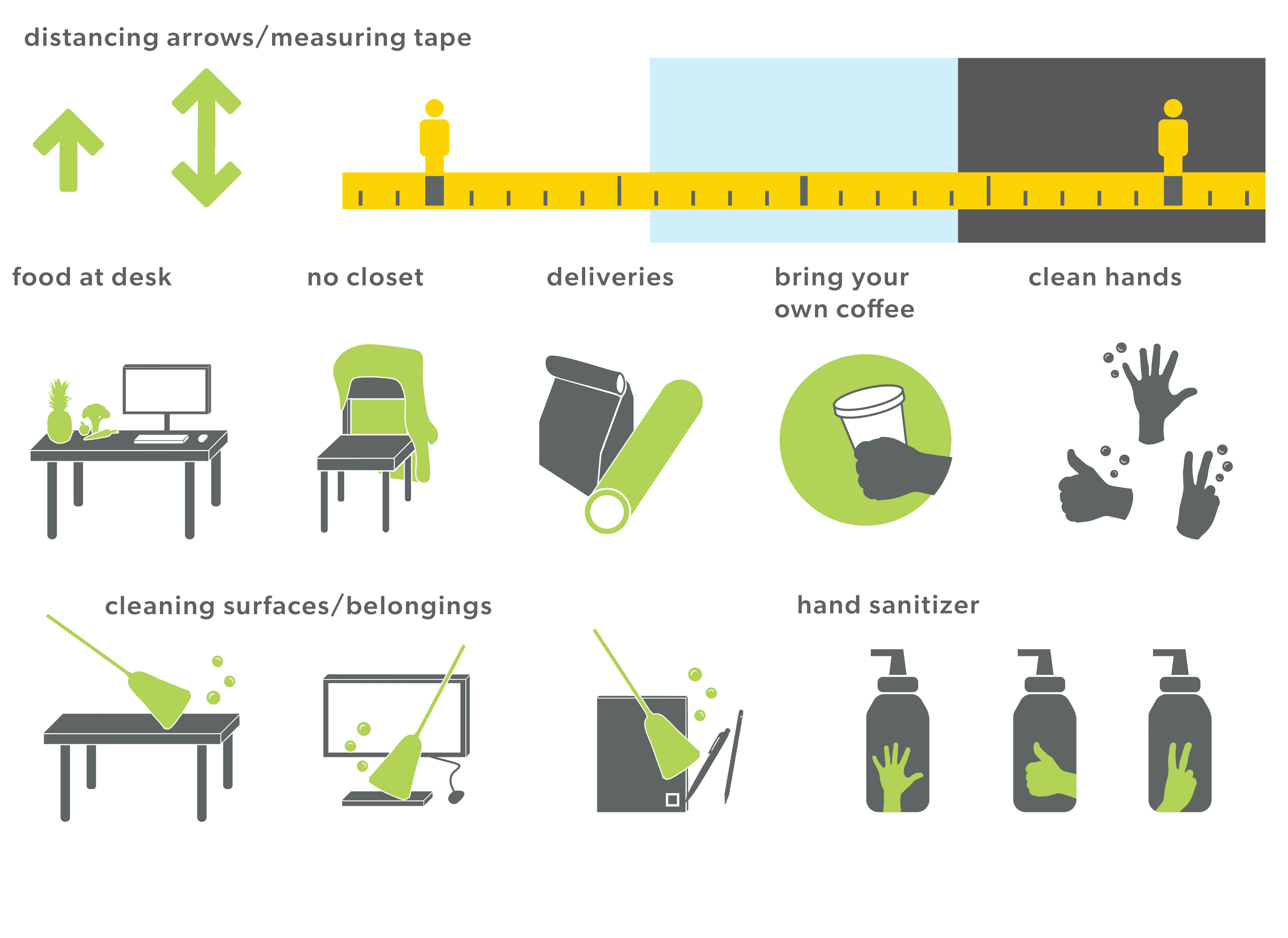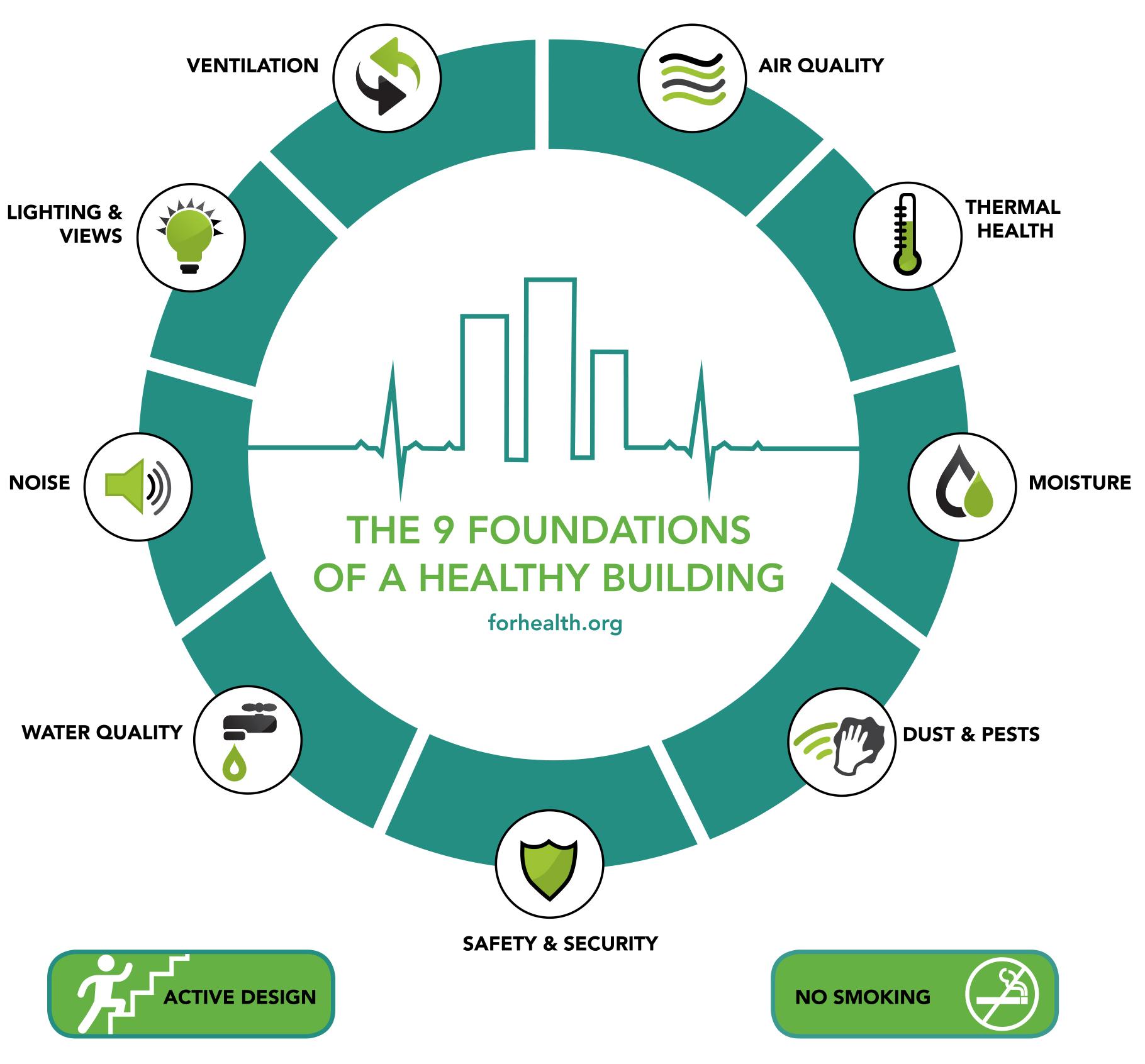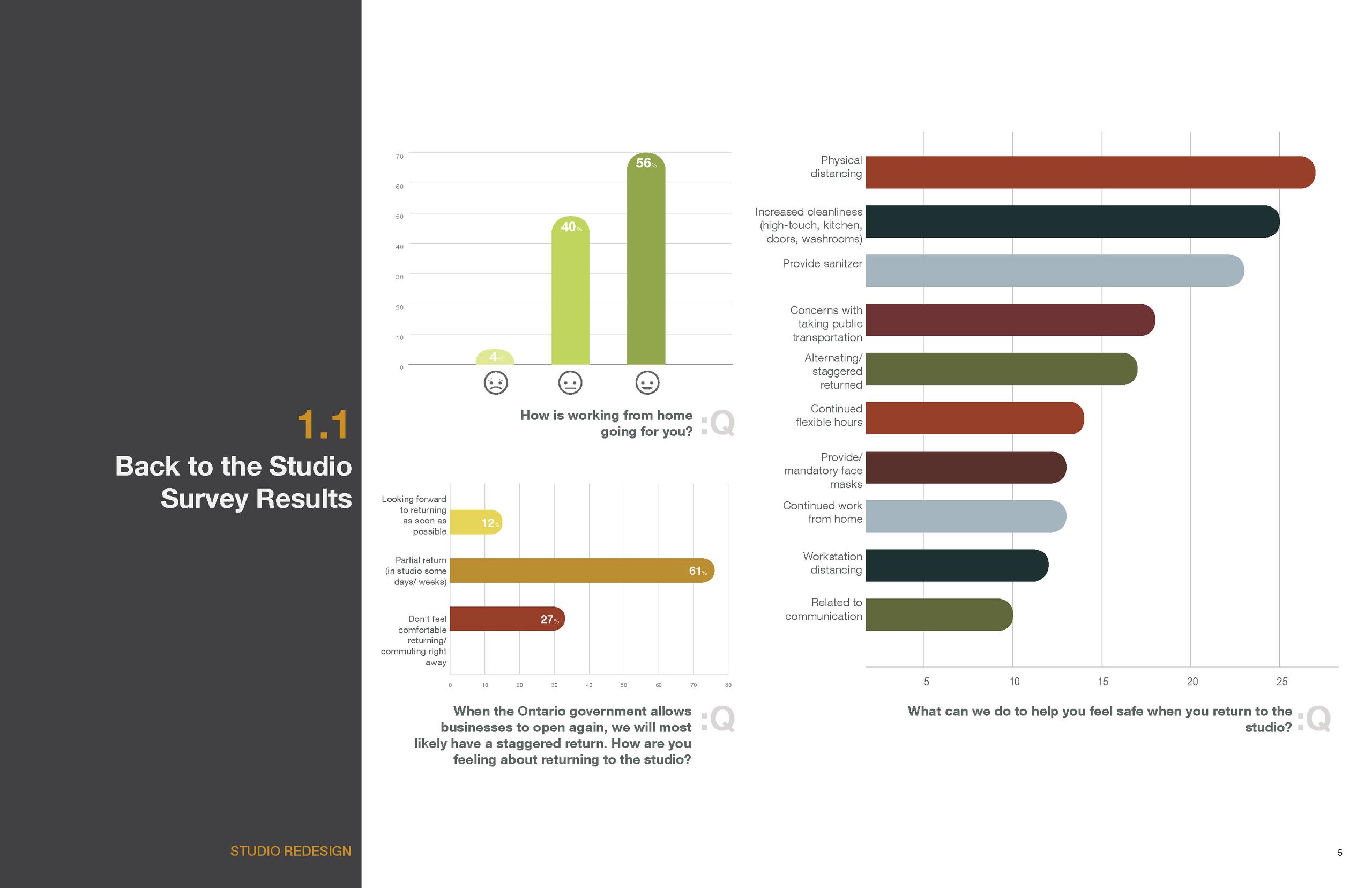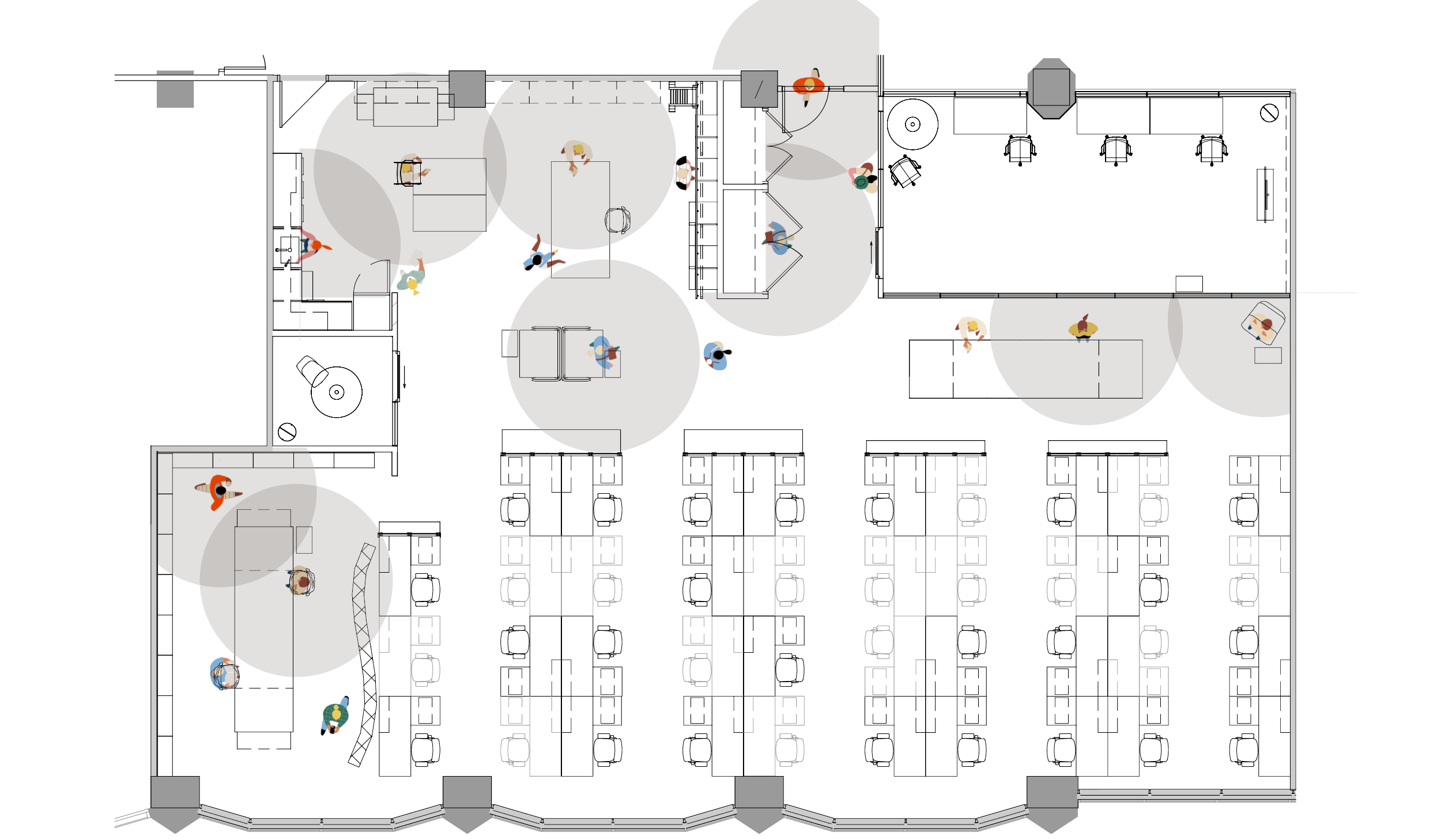Struggling to envision what a post-pandemic workspace will look like? The future of office work won’t necessarily involve plexi desk dividers and the demise of open concept design. Instead, we’ll see a shift in corporate culture as organizations turn to prioritizing wellness, flexibility, and the lifestyles of their employees.
In this blog, Quadrangle's Interiors Principal Caroline Robbie and Director of HR Peggy Creatura weigh in on what constitutes an effective back to the office plan– one that supports an organization’s workflow and its workforce.
Start Early
Shutting down a workplace is much easier than safely opening one back up. An effective return plan should address all of the safety implications of daily office life: hallway traffic, shared and personal workspaces, the adoption of new communication technologies, and flexible work hours, for example.
It takes time to evaluate COVID-19’s impact, develop a process, communicate it to a team, incorporate feedback, and support employees as they adapt to new circumstances. The first step towards success? Start as soon as possible. At Quadrangle, we’ve been planning for a smooth transition back to the office since mid-March.

Graphics and wayfinding designed by Quadrangle Interiors to support our Back to the Studio plan
Lead with Wellness
The health and safety of an organization’s workforce should be the key driver in developing a back to the office plan. Now especially, organizations want to invest in their people, and their people want to feel confident that their wellbeing is supported.
Quadrangle and Human Space’s newly-launched Wellness Ready program aims to approach planning from a wellness perspective. The program is designed to help organizations successfully plan for and realize the short and long-term shifts to create healthy environments. Most importantly, Wellness Ready asserts that a back to the office plan will be an ongoing process, designed to adapt as employee needs evolve.

Source: Harvard T.H. Chan School of Public Health
Strive for Transparency
We’ve learned a lot about the virus as it has progressed. Daily government communications and diving deeper into research have allowed us to understand the science behind COVID-19 and how it spreads through public spaces. Employers must also consider the message they want to communicate to their workforce. Are employees allowed to work flexible hours? How is their physical and mental health being prioritized? What support resources will they have access to?
At Quadrangle, daily status updates, town hall meetings, and employee surveys have allowed us to facilitate an ongoing, two-way conversation with our staff. We've learned that the terms “health” and “safety” mean different things to different people. Each staff member has provided a unique set of needs, concerns, and considerations to integrate into our plan.

Employee surveys are a great starting point to help understand what to prioritize when planning a return to the office
Foster Collaboration Elsewhere
The collaborative, high-traffic spaces where accidental meetings, socialization, and brainstorming sessions once occurred may be off-limits upon return. For employers, this is an opportunity to understand which group interactions their workforce relies on, and how they can be accommodated safely or virtually.
The adoption of video conference technologies such as Microsoft Teams and Zoom have allowed the Quadrangle team to stay connected daily, both socially and professionally. Our events have seen significant attendance and participation as groups gather virtually for water cooler chats, summer barbecues, and show and tell meetings with our partner BDP.
Reevaluate Physical Space
Rather than a complete office redesign on the basis of separating people, employers should pivot towards facilitating how people are using their workspaces. How often do employees need to be there? When do they need to travel through the hallways? What furniture is essential?
Focusing on equipment usage, directional travel, and shared space density can help organizations understand what aspects of their physical space are essential to workers. As a result, it could make sense to link how people work rather than applying hierarchical standards. For instance, an Executive Assistant with lots of paperwork could have the biggest space, as opposed to a CEO who only drops by for the occasional meeting.

Common area physical distancing guidelines for the Quadrangle Studio's fifth floor office space, taken from our Return to the Studio e-handbook
Encourage Flexibility
COVID-19 has impacted every facet of life: how people shop, work, travel, educate their kids and socialize. When people work from home, the line between their work and personal lives begins to blur. Having the power to create their schedules can help employees stay productive and allow them to enjoy the work they are doing.
For Quadrangle, a transition towards a flexible work environment was already on the rise and COVID-19 is simply sped up the process. Expanding our office hours has allowed people with personal challenges and family obligations to allocate their time as needed. This flexibility also allows us to appeal to a much wider pool of potential employees.
Above all, an effective back to the office plan should centre on its employees. The COVID-19 pandemic has accelerated a shift towards flexible work, physical and mental wellness, and purposeful workplace design. Organizations have an opportunity to improve the work/life balance for their employees, and the long-term progression towards healthier environments starts now.
Insights from Principal of Interiors and Content Media Caroline Robbie and Director of Human Resources Peggy Creatura

